

Make a point of visiting us weekly!
Organisations:
Essex Wildlife Trust
Essex Wildlife Trust
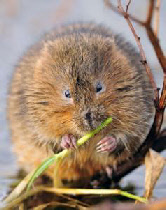
Essex Wildlife Trust,
Abbotts Hall Farm, Great Wigborough, Colchester, Essex CO5 7RZ
01621 862990
admin@essexwt.org.uk www.essexwt.org.uk
Registered Charity No. 21006
Abbotts Hall Farm, Great Wigborough, Colchester, Essex CO5 7RZ
01621 862990
admin@essexwt.org.uk www.essexwt.org.uk
Registered Charity No. 21006
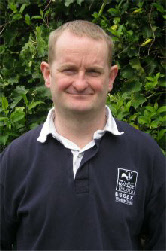
Talking with Grant Maton, of Essex Wildlife Trust (4th April 2011)
Grant Maton is the Corporate Communications Officer for Essex Wildlife Trust
The Corporate Scheme & Essex Wildlife
Rochford Life: Grant, what does your role in Essex Wildlife Trust involve?
Grant: It involves looking after the Corporate Scheme that we have built up over the last twenty years. Twenty years ago we thought we wanted, as a wildlife conservation charity founded in 1959, to attract funds from the business sector, but we realised even then that we didn’t have an emotive subject – people take the countryside for granted, they don’t realise it needs some conservation and help etc. – it doesn’t naturally attract people to put their hands in their pockets. For example Essex Ambulance have got the strap-line, “Coming to an accident near you” or you have the Hospices where the fund-raisers are people who have just lost a close relative, and we realised that we can’t appeal to people in that sort of way
Grant Maton is the Corporate Communications Officer for Essex Wildlife Trust
The Corporate Scheme & Essex Wildlife
Rochford Life: Grant, what does your role in Essex Wildlife Trust involve?
Grant: It involves looking after the Corporate Scheme that we have built up over the last twenty years. Twenty years ago we thought we wanted, as a wildlife conservation charity founded in 1959, to attract funds from the business sector, but we realised even then that we didn’t have an emotive subject – people take the countryside for granted, they don’t realise it needs some conservation and help etc. – it doesn’t naturally attract people to put their hands in their pockets. For example Essex Ambulance have got the strap-
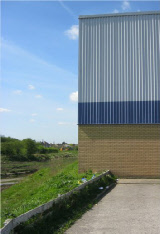
RL: So that prompted a new approach?
Grant: Yes, so twenty years ago we designed a corporate membership that actually had a menu of benefits, so if companies join they can use the corporate logo, for instance, and that logo associates the partnership between us and the business on the environmental side, showing environmental concern. We also, because we have built up 457 corporate members, encourage business to business, so they can get contacts whether it be customers or suppliers or people with information etc.
There may be people out there wondering where they can get this contact or environmental information from and they can get it from Essex Wildlife Trust. So, in a way, their corporate membership is paying for a service to a degree.
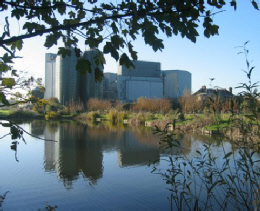
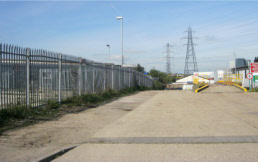
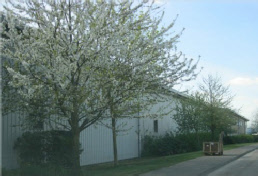
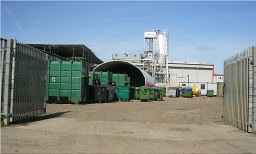
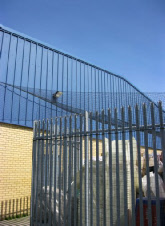
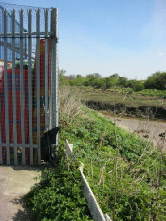
RL: How big is EWT?
Grant: We have 35,000 members, about 2% of the Essex population. Single membership is £27 pa. and joint membership is £34pa and family membership £49pa. We are a voice for wildlife really, so if there are planning applications going before Local Authorities, we monitor those. If any of our membership get in touch with us about things that are happening we may be able to lobby local authorities and government, and we will try and educate, for sometimes damage to the environment and wildlife isn’t done deliberately, sometimes it is done without even knowing.
Working with Industry
RL: For example?
Grant: Well for instance, we’ve had situations where a contractor has concreted a new car park without realising that in doing so he’s contaminated a local brook which had water voles in it. He didn’t realising he was damaging it killing the water voles, and also he didn’t realise that potentially he was breaking the law and could be subject to a £5000 fine or even a jail term. Oh yes, much of the time it is not deliberate, it’s just not knowing or not thinking, like chopping trees down while birds are nesting in Spring, and all sorts of things like that.
Another thing we try and do as a conservation charity is educate children at a very early age. If we can get children from say 4 to 6 upwards to appreciate the environment and appreciate wildlife and different species then they are likely to want to conserve it for their children and grandchildren. We have a department that specialises in this. We work very closely with schools with the National Curriculum.
Grant: We have 35,000 members, about 2% of the Essex population. Single membership is £27 pa. and joint membership is £34pa and family membership £49pa. We are a voice for wildlife really, so if there are planning applications going before Local Authorities, we monitor those. If any of our membership get in touch with us about things that are happening we may be able to lobby local authorities and government, and we will try and educate, for sometimes damage to the environment and wildlife isn’t done deliberately, sometimes it is done without even knowing.
Working with Industry
RL: For example?
Grant: Well for instance, we’ve had situations where a contractor has concreted a new car park without realising that in doing so he’s contaminated a local brook which had water voles in it. He didn’t realising he was damaging it killing the water voles, and also he didn’t realise that potentially he was breaking the law and could be subject to a £5000 fine or even a jail term. Oh yes, much of the time it is not deliberate, it’s just not knowing or not thinking, like chopping trees down while birds are nesting in Spring, and all sorts of things like that.
Another thing we try and do as a conservation charity is educate children at a very early age. If we can get children from say 4 to 6 upwards to appreciate the environment and appreciate wildlife and different species then they are likely to want to conserve it for their children and grandchildren. We have a department that specialises in this. We work very closely with schools with the National Curriculum.
RL: But your own area of activity is with business and industry?
Grant: Yes, being on the corporate side I tend to work in a corporate environment and sadly don’t get to see a lot of the wildlife on a day to day basis because sometimes I am stuck in industrial Essex trying to convince people on an industrial estate that they can do something for wildlife because a lot of people on such estates will say, but this is a horrible environment, what can I do? Well, actually you could put a bird box on the side of your building because the bird is not going to look at the building and say, Oh that’s a horrible building, he’s just going to see the nest box and if it’s in a suitable aspect, not too windy and not too wet and not too disturbed, you’d be amazed at how wildlife will come. I’ve got corporate members on Canvey Island who have got owl boxes and kestrel boxes on the side of their liquid gas storage units. The kestrel or the owl doesn’t know that there is gas in there, as long as he’s got somewhere to have a nest it doesn’t matter. We so often have this concept that wildlife has to be in a ‘green’ area and wildlife wouldn’t want to be in a grey-brown area, but actually that is wrong sometimes and it is amazing how much wildlife there is on an industrial estate.
Grant: Yes, being on the corporate side I tend to work in a corporate environment and sadly don’t get to see a lot of the wildlife on a day to day basis because sometimes I am stuck in industrial Essex trying to convince people on an industrial estate that they can do something for wildlife because a lot of people on such estates will say, but this is a horrible environment, what can I do? Well, actually you could put a bird box on the side of your building because the bird is not going to look at the building and say, Oh that’s a horrible building, he’s just going to see the nest box and if it’s in a suitable aspect, not too windy and not too wet and not too disturbed, you’d be amazed at how wildlife will come. I’ve got corporate members on Canvey Island who have got owl boxes and kestrel boxes on the side of their liquid gas storage units. The kestrel or the owl doesn’t know that there is gas in there, as long as he’s got somewhere to have a nest it doesn’t matter. We so often have this concept that wildlife has to be in a ‘green’ area and wildlife wouldn’t want to be in a grey-
RL: Do you have examples of this?
Grant: Well, yes, this morning I was signing up a business and they provide carpets and flooring but they want to be different, they want to be seen as the high end of the carpet supply market, but one of the things they want to use to market themselves is that they will take the old carpet away and make sure that it is disposed of in an environmentally friendly way, whether it be reused somewhere – and obviously I can put them in contact with people who might be able to reuse those carpets - or simply disposed of in an eco-friendly way. So the idea is that rather than them see it as a charity donation, they see it as a business partnership.
RL: Is there money saving in this?
Grant: Oh yes, so if they can get some information that saves them money – for instance we’ve just linked up with the Low Carbon Business Initiative in the Thames Gateway -
Grant: Well, yes, this morning I was signing up a business and they provide carpets and flooring but they want to be different, they want to be seen as the high end of the carpet supply market, but one of the things they want to use to market themselves is that they will take the old carpet away and make sure that it is disposed of in an environmentally friendly way, whether it be reused somewhere – and obviously I can put them in contact with people who might be able to reuse those carpets -
RL: Is there money saving in this?
Grant: Oh yes, so if they can get some information that saves them money – for instance we’ve just linked up with the Low Carbon Business Initiative in the Thames Gateway -
- (see http://www.lowcarbonbusiness.org.uk/ or
- http://www.pixelwork.com/portfolio/low-carbon-business/ )
-
- and it means that businesses can get a 40% grant if they are looking to make themselves more resource efficient. If we can introduce them to that, and they have already had in their mind to put money aside to spend on resource saving, then we can help get them that 40% grant, and we have saved them that 40% which means that they are likely to stay in relationship with us and maybe even be open to supporting us even more.
The Activities of Essex Wildlife
RL: Right, can we step behind that and ask a more fundamental question that should perhaps come before all this: what exactly does Essex Wildlife Trust do?
Grant: It started off in 1959 with people like Don Hunford who you might have seen on Springwatch, he’s one of our founding members. We started off as a local groups and people who were interested in wildlife and who saw that Planning Authorities and other people weren’t really caring about wildlife and so we set ourselves up as the Essex Naturalists Trust and it very much was a cottage charity in a way, based in small committees in back rooms, and we’ve just grown from there really. We now have 87 Reserves across the county of Essex where we look after after the 7,200 acres of land for conservation.
RL: Does this change at all?
Grant: Well, recently we’ve taken a step forward in the sense that now recognised that it is all well and good knowing that there are 87 Reserves for the benefit of wildlife but they are like little islands and of course the problem with any sort of island management is that if there was a disaster like, for instance, the storm of ’87, and say a forest was wiped out, then all the species we were looking after in that little nature Reserve, could potentially also be wiped out. The other thing of course, is that if we manage them all as islands, then they can’t migrate to other islands, so what we’ve done is recently sign up with the 47 Wildlife Trusts across the country - the umbrella movement above us is the Royal Society of Wildlife Trusts and all the 74 Wildlife Trusts contribute to the RSWT and they are our voice nationally, while we continue to look at things locally.the 7,200 acres of land for conservation.
The Activities of Essex Wildlife
RL: Right, can we step behind that and ask a more fundamental question that should perhaps come before all this: what exactly does Essex Wildlife Trust do?
Grant: It started off in 1959 with people like Don Hunford who you might have seen on Springwatch, he’s one of our founding members. We started off as a local groups and people who were interested in wildlife and who saw that Planning Authorities and other people weren’t really caring about wildlife and so we set ourselves up as the Essex Naturalists Trust and it very much was a cottage charity in a way, based in small committees in back rooms, and we’ve just grown from there really. We now have 87 Reserves across the county of Essex where we look after after the 7,200 acres of land for conservation.
RL: Does this change at all?
Grant: Well, recently we’ve taken a step forward in the sense that now recognised that it is all well and good knowing that there are 87 Reserves for the benefit of wildlife but they are like little islands and of course the problem with any sort of island management is that if there was a disaster like, for instance, the storm of ’87, and say a forest was wiped out, then all the species we were looking after in that little nature Reserve, could potentially also be wiped out. The other thing of course, is that if we manage them all as islands, then they can’t migrate to other islands, so what we’ve done is recently sign up with the 47 Wildlife Trusts across the country -
Now Grant and I carried on this discussion for probably another hour and a half, and so we’re going to stop it here and we’ll bring the rest of it to you in the next pages. In the meantime can we recommend you go and have a look at the Essex Wildlife website and maybe even consider joining up: www.essexwt.org.uk
In the next part we’ll hear how Grant came into this world of wildlife and maybe even venture into the world of birds and coping with the wildlife in your own garden. It’s challenging stuff and if you’re a gardener like me, or even an allotment keeper, he’ll give you some stuff to seriously think about. See you then.
In the next part we’ll hear how Grant came into this world of wildlife and maybe even venture into the world of birds and coping with the wildlife in your own garden. It’s challenging stuff and if you’re a gardener like me, or even an allotment keeper, he’ll give you some stuff to seriously think about. See you then.
To return to the top of the page, please CLICK HERE
To go to Part 2 of Grant’s conversation, please CLICK HERE